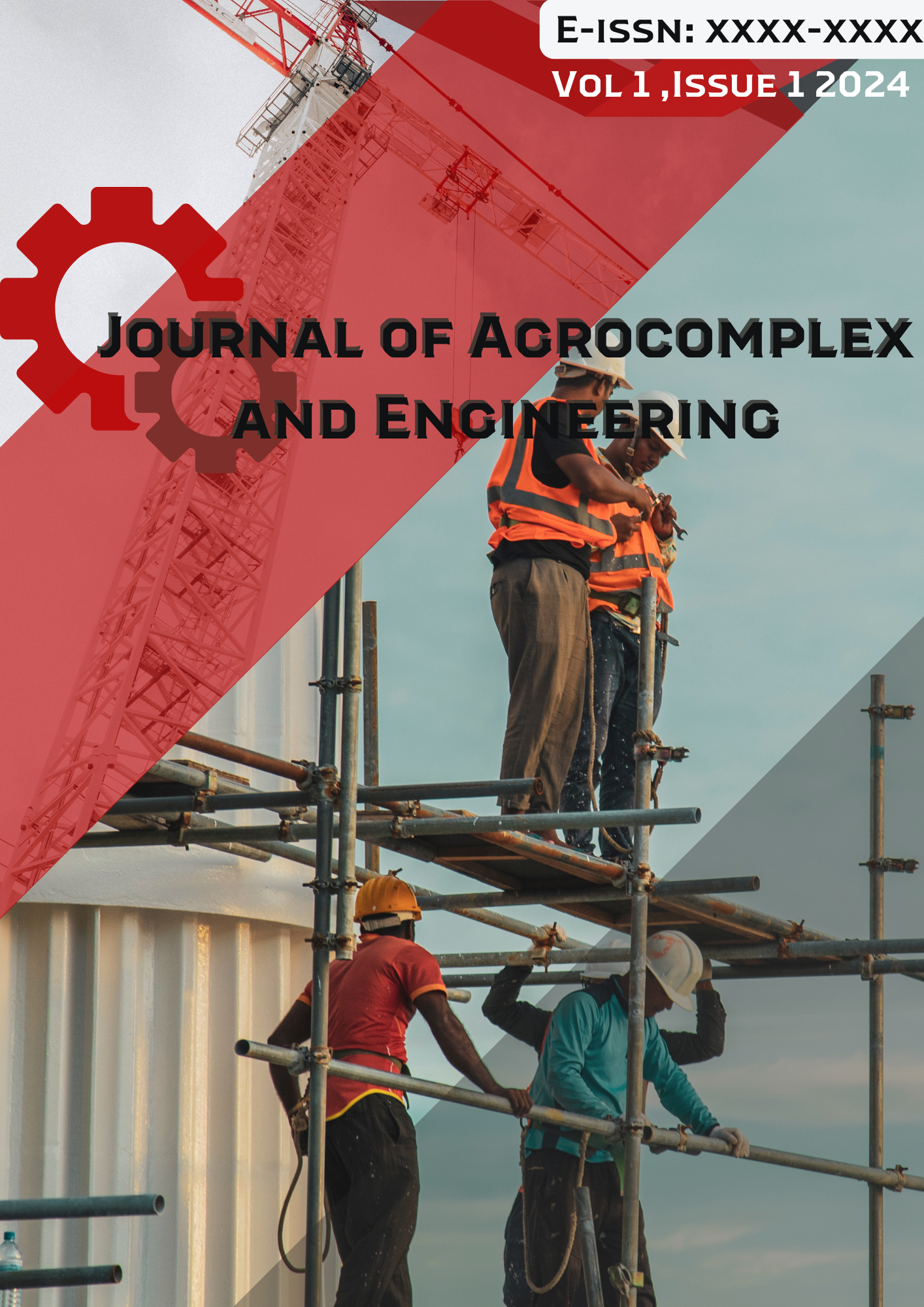Development of an Artificial Intelligence-Based Smart Greenhouse System to Optimize Vegetable Production
Keywords:
Artificial Intelligence , Smart Greenhouse IoT, Sustainable Agriculture , Vegetable ProductionAbstract
Purpose: Artificial Intelligence (AI) in agriculture has become a potential opportunity to enhance resource use and crop output, and especially in controlled-environment cropping. This paper introduces an intelligent, greenhouse prototype and its modelling and its testing in order to maximize the production of vegetable crops in the tropical world.
Subjects and Methods: It consists of the system that combines Internet of Things (IoT) with machine learning algorithms, including Random Forest and Artificial Neural Networks (ANN), engineered to control microclimatic factors including temperature and humidity, soil moisture, and intensity of light.
Results: An experimental work was implemented on a model crop lettuce wherein the prototypical greenhouse was piloted in a 4 x 6-meter of lettuce grown in a chamber system under a duration of 45 days. According to the findings, greenhouse managed by AI allowed the reduction of water consumption by 39.6 percent and energy consumption by 12.7 percent in comparison with the traditional control, and increased the fresh weight and the number of leaves in crops by 28.4 percent.
Conclusions: These results emphasize the usefulness of AI in the attainment of sustainable farming systems through increased productivity but low use of inputs. The paper comes to the conclusion that AI-based smart greenhouse systems show great potential to be adopted in tropical areas, but additional studies are necessary to verify scalability, crop variety, and economic viability.
References
Argento, S., Garcia, G., & Treccarichi, S. (2024). Sustainable and low-input techniques in Mediterranean greenhouse vegetable production. Horticulturae, 10(9), 997. https://doi.org/10.3390/horticulturae10090997
Egi, Y., Hajyzadeh, M., & Eyceyurt, E. (2022). Drone-Computer Communication Based Tomato Generative Organ Counting Model Using YOLO V5 and Deep-Sort. Agriculture 2022, 12, 1290.
FAO. (2021). The State of Food and Agriculture 2021. Food and Agriculture Organization of the United Nations.
Ghiasi, M., Wang, Z., Mehrandezh, M., & Paranjape, R. (2023). A systematic review of optimal and practical methods in design, construction, control, energy management and operation of smart greenhouses. IEEE Access, 12, 2830-2853. http://dx.doi.org/10.1109/ACCESS.2023.3346436
Kakani, V. G., Nguyen, V. H., Kumar, B. P., Kim, H., & Pasupuleti, V. R. (2020). A critical review on computer vision and artificial intelligence in food industry. Journal of Agriculture and Food Research, 2, 100033. http://dx.doi.org/10.1016/j.jafr.2020.100033
Kamilaris, A., & Prenafeta-Boldú, F. X. (2018). Deep learning in agriculture: A survey. Computers and Electronics in Agriculture, 147, 70–90.
Khan, S. U., Khan, N., Ullah, F. U. M., Kim, M. J., Lee, M. Y., & Baik, S. W. (2023). Towards intelligent building energy management: AI-based framework for power consumption and generation forecasting. Energy and buildings, 279, 112705. http://dx.doi.org/10.1016/j.enbuild.2022.112705
Kowalska, A., & Ashraf, H. (2023). Advances in deep learning algorithms for agricultural monitoring and management. Applied Research in Artificial Intelligence and Cloud Computing, 6(1), 68-88.
Liakos, K. G., Busato, P., Moshou, D., Pearson, S., & Bochtis, D. (2018). Machine learning in agriculture: A review. Sensors, 18(8), 2674.
Patil, S. S., & Kale, N. V. (2016). A model for smart agriculture using IoT. Proceedings of International Conference on Global Trends in Signal Processing, Information Computing and Communication (ICGTSPICC), 543–545. http://dx.doi.org/10.1109/ICGTSPICC.2016.7955360
Putra, A. Y., Nugroho, H., & Prasetyo, A. (2022). Challenges of implementing smart farming in Indonesia: A case study on greenhouse vegetable production. Journal of Agricultural Technology Research, 4(2), 55–65.
Rufaidah, F., Karyani, T., Wulandari, E., & Setiawan, I. (2023). A review of the implementation of financial technology (Fintech) in the Indonesian Agricultural Sector: Issues, access, and challenges. International Journal of Financial Studies, 11(3), 108. https://doi.org/10.3390/ijfs11030108
Shamshiri, R. R., Kalantari, F., Ting, K. C., Thorp, K. R., Hameed, I. A., Weltzien, C., ... & Shad, Z. M. (2018). Advances in greenhouse automation and controlled environment agriculture: A transition to plant factories and urban agriculture. International Journal of Agricultural and Biological Engineering, 11(1), 1–22.
Shamshiri, R., Kalantari, F., Ting, K. C., Thorp, K. R., Hameed, I. A., Weltzien, C., ... & Shad, Z. M. (2018). Advances in greenhouse automation and controlled environment agriculture: A transition to plant factories and urban agriculture. International Journal of Agricultural and Biological Engineering, 11(1), 1-22. http://dx.doi.org/10.25165/j.ijabe.20181101.3210
Supari, Tangang, F., Juneng, L., & Aldrian, E. (2017). Observed changes in extreme temperature and precipitation over Indonesia. International Journal of Climatology, 37(4), 1979-1997. https://doi.org/10.1002/joc.4829
Downloads
Published
Issue
Section
License
Copyright (c) 2025 Journal of Agrocomplex and Engineering

This work is licensed under a Creative Commons Attribution-ShareAlike 4.0 International License.






